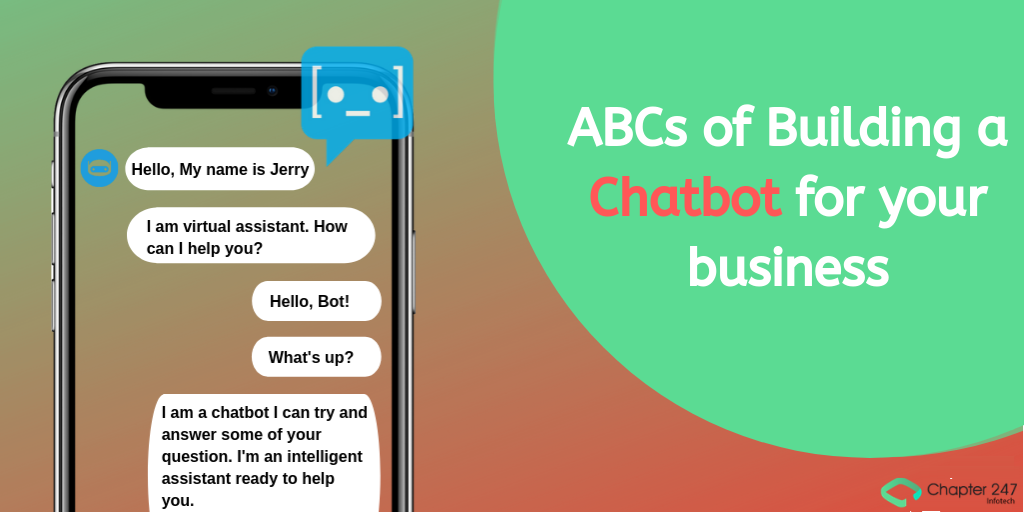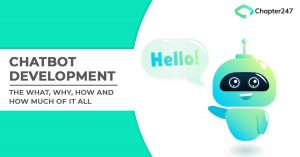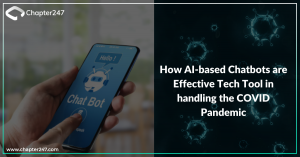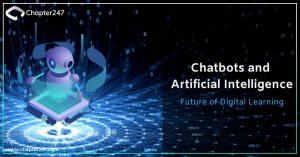Technology is growing by leaps and bounds since the last few years and for many more to come. This has led to the inception of technologies like Artificial Intelligence (AI) that have helped businesses evolve and deliver better services to their end users. Chatbots is one such way that has helped the enterprises in assisting their clients by enabling a strong two-way communication, that is always available to serve them.
In this article, we would be discussing all that you need to know about building the Chatbot for your enterprise using Artificial Intelligence.
Introduction to Chatbots
With the fixation on customer engagement, the business world has realized the importance of chatbots for customer retention and acquisition. With tech companies being plagued by the question “How to make a Chatbot?”, it is important to understand what chatbots are, and why they are important for your business.
Chatbots can be described as intelligent systems which mimic human-like conversations with other humans using a set of rules defined in AI. The conversational interface used by humans in this context can be either verbal or textual. These systems can be embedded within apps like Slack, Facebook Messenger and Telegram and help users in a variety of ways – from ordering groceries to financial management.
A key concept behind creating a successful chatbot is to obtain an understanding of the context of the conversation taking place. This requires the chatbots to possess the capacity to dynamically modify the nature of the conversation based on the context in which the questions are asked.
The need to learn chatbot development has been highlighted by the importance of utilizing artificial intelligence, data analysis and content management tools to help improve the quality of customer engagement and make it an integral component of business.
Though most chatbots, are pre-programmed to answer a set of predefined queries or give keyword-oriented responses, the true hallmark of a custom chatbot application development company lies in utilizing cutting edge technology to replicate systems with near-human capabilities for initiating and executing meaningful conversations. And the key to such systems lies in a thorough understanding of customer engagement.
The Layers of Customer Engagement
Understanding customer engagement is vital to the health of any organization. Indeed, it is the cornerstone on which marketing strategies are made. However, business experts have come up with a three-layered strategy of customer engagement which is a quintessential pre-requisite in Chatbot development.
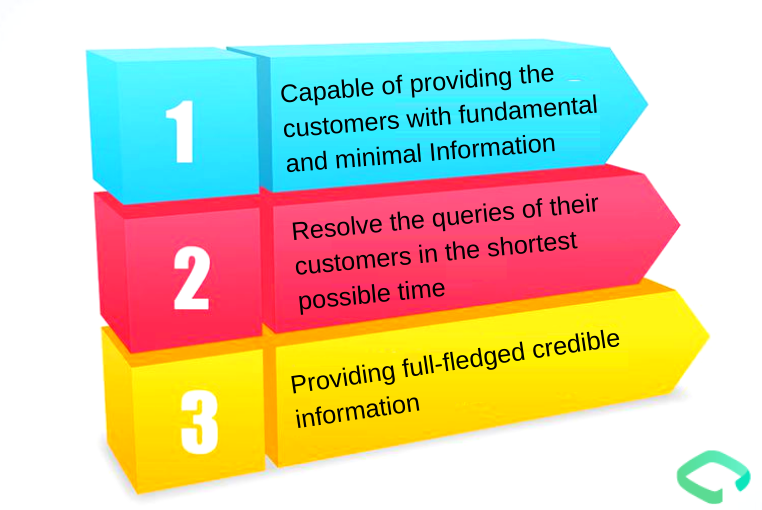
1. Capable of providing the customers with fundamental and minimal information
Chatbots are usually the first POC for any online business. The chatbot should be able to provide customers fundamental information about the organization and products by utilizing as minimum words as possible.
This is key to grabbing the interest of the customers and beginning their engagement with the brand. Having an IVR system to provide a menu-based list of options about how to take the engagement further is a good way to propel the customers into the next level of engagement.
2. Resolve customer queries in the shortest possible time
The second phase of customer engagement deals with chatbots being able to communicate with support teams to resolve customer issues as quickly as possible.
There may be some queries which need manual intervention, and therefore the chatbot must be equipped to provide CRM software as well as personnel with pertinent information about the context and nature of the customer query as well as inputs about customer behaviour to comprehensively tackle the situation.
3. Providing full-fledged credible customer information
The validation of a chatbots effectiveness lies in evaluating the credibility of the information provided. For this purpose, chatbots employ vast datasets to train themselves on various aspects of customer behaviour and requirements and identify the appropriate response for a given situation.
The information provided must be useful to the customer not only during the interaction, but after it as well, thereby replicating ‘human-like’ communication.
Stages of developing a chatbot
Once you have understood the various levels of customer engagement required to create the chatbot, it is time to go ahead and make it materialize.
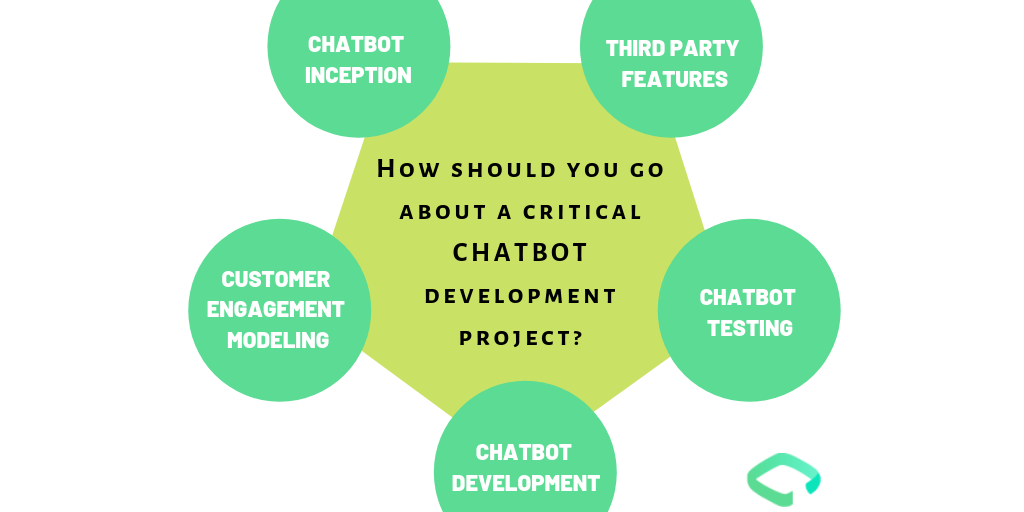
1. Chatbot inception
The basic step in the development process is to undertake a thorough requirement analysis and understand the behavioural traits of the different types of customers you are catering to. Understanding the right platform for deploying the chatbot, as well as tuning it to serve the user base are some of the primary activities at this stage.
2. Customer engagement modelling and detailed planning
Before proceeding to development, it is crucial to gain an idea about the different customer archetypes and query resolution paths. The possible query resolution paths can be mapped as set of flowcharts keeping in mind the myriad possibilities in which a customer’s query can be answered and the many ways, as well as in which the customer may seek to present the query.
To create a well-defined user journey for any query, it is important to know:
- The ultimate goal which the customer seeks
- The information required to reach that goal
- The inputs which the chatbot must work with to enable problem solution.
3. Chatbot development
Custom Chatbot application development firms worth their salt adopt an iterative development ideology to develop the user journeys and the reply mechanism. Agile software development in the form of sprints are especially well suited to the process, as each sprint can plan and implement the high-level concepts espoused in the manual conversation mechanism crafted for each component.
Reinforcement learning plays a big role in this process as it helps the system learn from its actions and get better at its job.
4. Chatbot testing
Chatbot testing is done by both testing bot performance as well as conducting a regression testing of all components once the changes suggested by the reinforcement learning mechanism has been incorporated.
Once these activities have been completed it is important to have a phase of User-Acceptance Testing to ensure whether the chatbot can reply satisfactorily to humans in a simulated environment. This is critical to understand whether the bot is ready for the market.
5. Special and Third-party features
Chatbot technology has moved towards sustainable offerings and cross-domain solutions. Clients tend to seek:
- Full-scale messenger and SMS support capabilities.
- Robust multi-faceted interactions.
- NLP-driven communication.
- Web service incorporation using RESTful API’s.
- Self-sustaining chatbots which optimize their performance based on past interactions.
Partner with us for building your chatbot
Custom Chatbots offer unlimited potential and are predicted to bring about a revolution in the field of customer engagement. It is essential to hire a chatbot developer well versed in the technical nitty-gritties of bot development as well as a thorough understanding of the domain.
Chapter247 Infotech has vast experience in crafting custom-made software solutions and specialize in chatbot development. Its team of dedicated engineers and business administrators ensure that the custom chatbot created will be tailor-made to suit your business requirements and offer a high degree of customer satisfaction.
Contact us to build your custom chatbot application today and see your business take-off.



